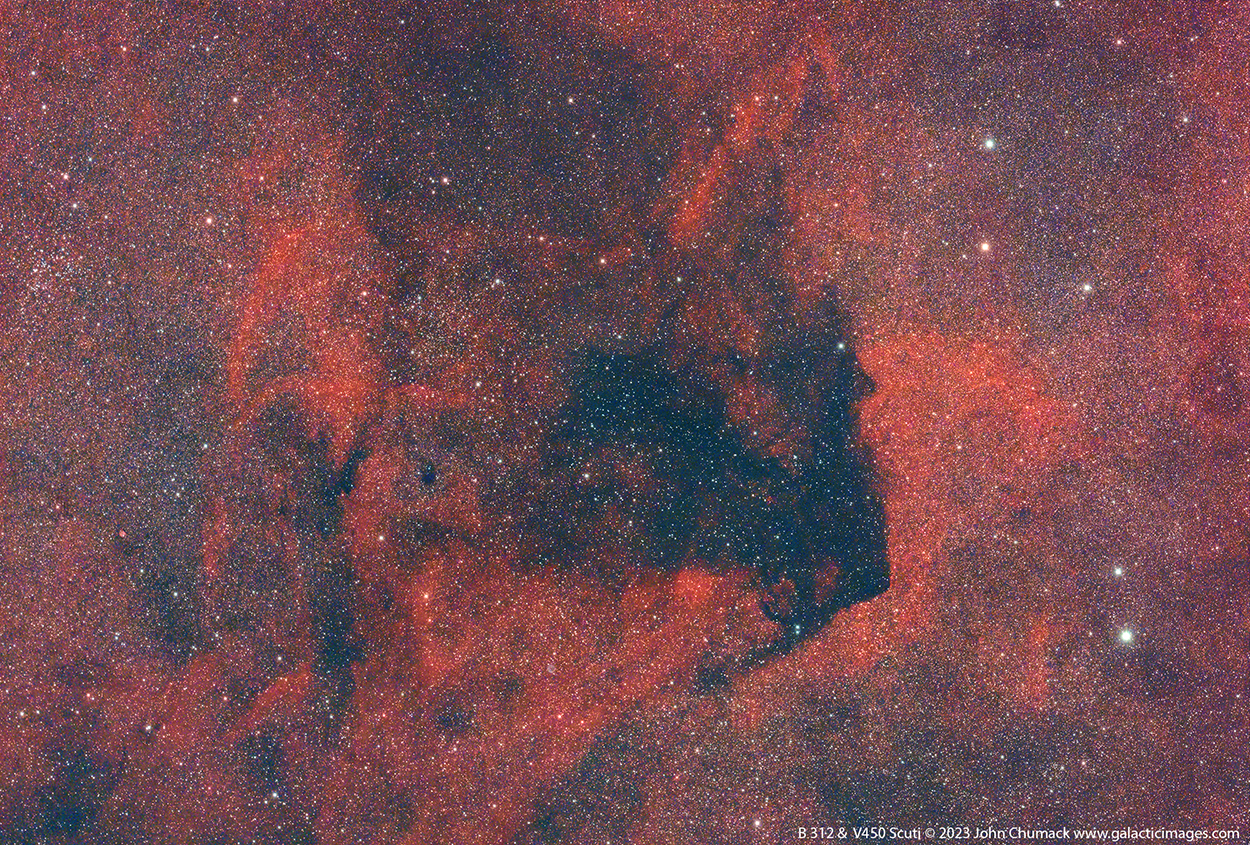Barnard 312 Dark Nebula (LDN 379) & V450 Scuti & Gamma Scuti Region
Sitting within this incredibly dense sea of stars located in the constellation Scutum,
you can easily see B 312 or Barnard’s Dark nebula in this image, it is so dense it blocks out the light from the background stars.
There are faint wisps of Red Nebulosity located throughout the region as well.
The overall image with the dark nebula looks like a profile of someone looking towards the sky!
Do you see it?
To the upper right is the very luminous Super-giant (Orange/Red) Star known as V450 Scuti. Shining at magnitude 5.47,
V450 Scuti is a naked eye star and can be seen on a clear night without binoculars or a telescope.
It is also a Semi-Regular pulsating variable Star, a W type variable star. (5.42mag to 5.49mag)
Variable stars are stars whose size and/or brightness changes over time. V450 Scuti is located about 2,886.40 light-years (884.96 parsecs) away from Earth.
Gamma Scuti the brightest star in the lower right of my image, has a very interesting future…..
Gamma Scuti, Latin from γ Scuti, is a single, white-hued star.
The apparent visual magnitude of 4.67 indicates this is a dim star but visible to the naked eye.
Based upon an annual parallax shift as seen from Earth, this star is located about 319 light years from the Sun.
Currently it is moving towards our Solar System at 41 km/s, which means in 2.35 million years it will pass at just 20 light-years (5.519 parsecs) distance,
probably becoming the brightest star in the night sky, at magnitude −2.1, for a period.
Celestron 8 inch F2 RASA Telescope, ZWO AM5 Mount, ZWO 294MC Cooled Cmos Camera, Starizona NBZ UHC filter,
ASI Air Plus, via Ethernet to IPAD, 5 x 300sec. subs, 25 minute total integration time.
Capture at my observatories in JBSPO in Yellow Springs, Ohio on 08-19-2023.
Best Regards,
John Chumack
www.galacticimages.com







